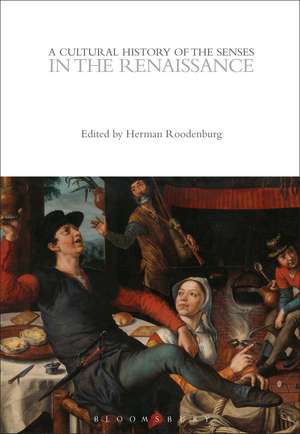A Cultural History of the Senses in the Renaissance: The Cultural Histories Series
Editat de Herman Roodenburgen Limba Engleză Paperback – 19 sep 2018
Din seria The Cultural Histories Series
- 13%
 Preț: 204.45 lei
Preț: 204.45 lei - 43%
 Preț: 490.99 lei
Preț: 490.99 lei - 13%
 Preț: 191.26 lei
Preț: 191.26 lei - 30%
 Preț: 511.46 lei
Preț: 511.46 lei - 30%
 Preț: 542.77 lei
Preț: 542.77 lei - 43%
 Preț: 419.45 lei
Preț: 419.45 lei - 43%
 Preț: 440.48 lei
Preț: 440.48 lei - 43%
 Preț: 441.17 lei
Preț: 441.17 lei - 30%
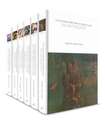 Preț: 2850.60 lei
Preț: 2850.60 lei - 30%
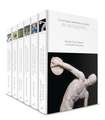 Preț: 2849.15 lei
Preț: 2849.15 lei - 13%
 Preț: 200.89 lei
Preț: 200.89 lei - 5%
 Preț: 3138.94 lei
Preț: 3138.94 lei - 30%
 Preț: 510.27 lei
Preț: 510.27 lei - 43%
 Preț: 419.45 lei
Preț: 419.45 lei - 30%
 Preț: 511.74 lei
Preț: 511.74 lei - 13%
 Preț: 202.66 lei
Preț: 202.66 lei - 43%
 Preț: 440.48 lei
Preț: 440.48 lei - 13%
 Preț: 187.70 lei
Preț: 187.70 lei - 43%
 Preț: 418.49 lei
Preț: 418.49 lei - 30%
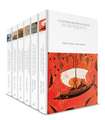 Preț: 2847.93 lei
Preț: 2847.93 lei - 13%
 Preț: 189.02 lei
Preț: 189.02 lei - 30%
 Preț: 544.48 lei
Preț: 544.48 lei - 13%
 Preț: 189.02 lei
Preț: 189.02 lei - 30%
 Preț: 543.66 lei
Preț: 543.66 lei - 30%
 Preț: 542.84 lei
Preț: 542.84 lei - 30%
 Preț: 511.14 lei
Preț: 511.14 lei - 30%
 Preț: 512.37 lei
Preț: 512.37 lei - 30%
 Preț: 510.86 lei
Preț: 510.86 lei - 43%
 Preț: 419.45 lei
Preț: 419.45 lei - 30%
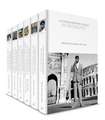 Preț: 2699.93 lei
Preț: 2699.93 lei - 43%
 Preț: 419.45 lei
Preț: 419.45 lei - 43%
 Preț: 416.26 lei
Preț: 416.26 lei - 30%
 Preț: 3006.52 lei
Preț: 3006.52 lei - 43%
 Preț: 439.79 lei
Preț: 439.79 lei - 13%
 Preț: 202.22 lei
Preț: 202.22 lei - 43%
 Preț: 419.45 lei
Preț: 419.45 lei - 43%
 Preț: 440.48 lei
Preț: 440.48 lei - 43%
 Preț: 440.48 lei
Preț: 440.48 lei - 40%
 Preț: 488.97 lei
Preț: 488.97 lei - 43%
 Preț: 414.88 lei
Preț: 414.88 lei - 30%
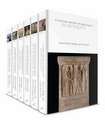 Preț: 2854.02 lei
Preț: 2854.02 lei - 13%
 Preț: 189.02 lei
Preț: 189.02 lei - 43%
 Preț: 416.26 lei
Preț: 416.26 lei - 43%
 Preț: 419.03 lei
Preț: 419.03 lei - 13%
 Preț: 188.39 lei
Preț: 188.39 lei - 30%
 Preț: 543.36 lei
Preț: 543.36 lei - 43%
 Preț: 489.75 lei
Preț: 489.75 lei
Preț: 201.77 lei
Preț vechi: 231.76 lei
-13% Nou
Puncte Express: 303
Preț estimativ în valută:
38.62€ • 41.96$ • 32.46£
38.62€ • 41.96$ • 32.46£
Carte tipărită la comandă
Livrare economică 21 aprilie-05 mai
Preluare comenzi: 021 569.72.76
Specificații
ISBN-13: 9781350077904
ISBN-10: 1350077909
Pagini: 288
Ilustrații: 35 bw illus
Dimensiuni: 169 x 244 x 18 mm
Greutate: 0.54 kg
Editura: Bloomsbury Publishing
Colecția Bloomsbury Academic
Seria The Cultural Histories Series
Locul publicării:London, United Kingdom
ISBN-10: 1350077909
Pagini: 288
Ilustrații: 35 bw illus
Dimensiuni: 169 x 244 x 18 mm
Greutate: 0.54 kg
Editura: Bloomsbury Publishing
Colecția Bloomsbury Academic
Seria The Cultural Histories Series
Locul publicării:London, United Kingdom
Caracteristici
Offers historians and scholars in related fields the possibility of enlivening their own work with information regarding its sensory context
Notă biografică
Herman Roodenburg holds the Chair of The Historical Anthropology and Ethnology of Europe at the Free University of Amsterdam and is also affiliated with the Meertens Institute, of the Royal Netherlands Academy of Arts and Sciences. Among his recent English publications are The Eloquence of the Body: Perspectives on Gesture in the Dutch Republic (2004), Forging European Identities, 1400-1700 (2007), Body and Embodiment in Netherlandish Art (2008) and The Passions in the Arts of the Early Modern Netherlands (2010).
Cuprins
Introduction: Entering the Sensory Worlds of the Renaissance Herman Roodenburg (Free University of Amsterdam, The Netherlands)1. The Social Life of the Senses: Architecture, Food and Manners Niall Atkinson (University of Chicago, USA)2. Urban Sensations: Attractive and Repulsive Peter Burke (University of Cambridge, UK)3. The Senses in the Marketplace: Sensory Knowledge in a Material World Evelyn Welch (Victoria & Albert Museum, UK)4. The Senses in Religion: Towards the Reformation of the Senses Matthew Milner (McGill University, Canada)5. The Senses in Philosophy and Science: From the Nobility of Sight to the Materialism of Touch Danijela Kambaskovic (University of Western Australia) and Charles T. Wolfe (Ghent University, Belgium)6. Medicine and the Senses: Physicians, Sensation, and the Soul Stephen Pender (University of Windsor, Canada)7. The Senses in Literature: Renaissance Poetry and the Paradox of Perception Holly Dugan (George Washington University, USA)8. Art and the Senses: Representation and Reception of Renaissance Sensations François Quiviger (Warburg Institute, UK)9 Sensory Media: The Circular Links between Orality and Writing Federico Barbierato (University of Verona, Italy)NotesBibliographyNotes on contributorsIndex
Recenzii
Many of the essays are lavishly illustrated; all are written with elegance and an attentive eye to the volume's potential dual readership, nonspecialists as well as specialists. The collective accomplishment is no small feat, and the result is deeply pleasurable to read while evincing somewhat less of the critical ferment on display in some of the year's other studies in adjacent areas. I suspect it will prove a much-appreciated resource in advanced survey courses of the era.
